This article is for Project Leads, HR Business Partners and Function Leads.
It’s vital to consider your framework a product, not a project. That’s because it’s a living document, not a one and done task. You’ll need to use it, change it and improve it as your teams and organisation evolves.
Why frameworks are a product not a project
Many people embark on a lengthy process of researching, writing, levelling, assessing and rewriting, until their framework is ready for the big roll out to the organisation. It’s totally understandable — frameworks can be a big piece of work, and you want to get it right the first time (and get on using it).
There’s a problem with this approach though. Often, that ‘perfect’ framework doesn’t work out, and needs to be done again.
It’s frustrating, but also inevitable.
Here’s why your frameworks need to grow with your organisation;
-
Teams grow and new jobs are created
-
The jobs in your organisation change as responsibilities shift
-
Employees choose to take their job in a new direction
-
The remit of a team changes or grows
-
New skills emerge, like Prompt Writing for AI specialists
-
You realise that, after using the frameworks for a few months, they’re not quite as perfect as you thought they were.
If you’ve approached your frameworks as a project — that massive piece of work, with an end date and the big bang roll out — this is a big problem. Your time is precious, and you don’t want to have to go through the whole build process again, or have to explain to your organisation why you’re changing it up so soon.
Approach frameworks as a product though, with the knowledge and expectation that things are going to change, and this isn’t a problem at all.
The benefits of approaching frameworks as a product
When you set up your frameworks as a product, you can;
-
Roll them out and start finding value from them faster, because you haven’t laboured over getting them perfect first time
-
Engage teams earlier, capturing their opinions, and testing and iterating from there
-
Evolve the frameworks based on actual insight from using them rather than theoretical discussion.
3 Steps to make your framework a product
Step one: Involve your people early
As mentioned in the Getting feedback article, it’s important that managers and their reports sit down together to review the content within their framework and capture any initial feedback. Engaging your teams at this stage ensures everyone has the chance to contribute and take ownership, and there’s a much lower risk of the frameworks being rejected.
Managers should ask their reports these questions:
-
Are the skills outlined representative of your job?
-
Do the levels of each skill match up?
-
Are the positions right?
-
Do we need to add more examples to a skill to bring it to life?
Managers should then share any feedback with their Function Lead and/or HR Business Partner, who can update the content accordingly.
Step two: Introduce a quarterly framework ‘check-in’
Set a quarterly cadence for managers and their reports to talk through all the skills within a report’s position and decide whether they’re ‘working towards’, ‘meeting’ or ‘exceeding’ the skill level associated with their position.
Think about any examples that might evidence the progress the report has made in a skill, and jot down any actions that might help them to grow further. Make sure managers and reports keep a note of what’s discussed to refer back to next time.
Use this ‘check-in’ as an opportunity to capture any updates that may need to be made to the framework too. These should be fed back to the Function Lead and/or HR Business Partner and actioned.
💡 If you’re subscribed to Progression Grow you can run Check-ins within the app. Progression Check-ins are designed to be fair, simple and pain-free for both managers and reports!
Step three: Review annually
The Project Lead, HR Business Partners and Function Leads should come together at least annually to review the content of each framework, positions and skills, and check whether they’re still relevant. Changes should be made swiftly, then communicated back to the team and reviewed during the next round of quarterly ‘check-ins’.
💡 Your Progression Customer Success Manager can support you in establishing and maintaining habits that ensure your frameworks remain relevant and impactful. They’ll also meet with you quarterly to review progress and measure success against the criteria set at the start of the build and rollout project.
